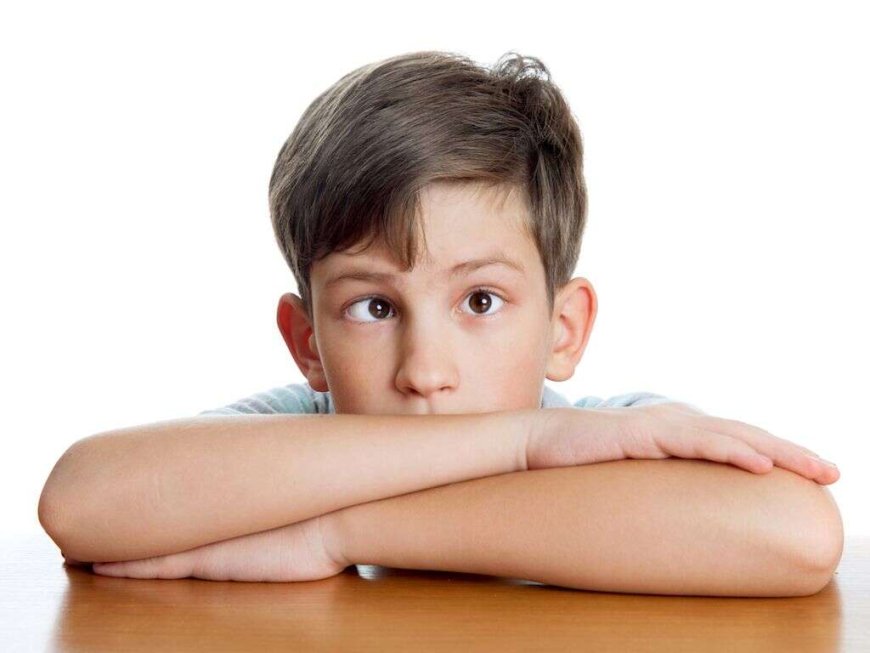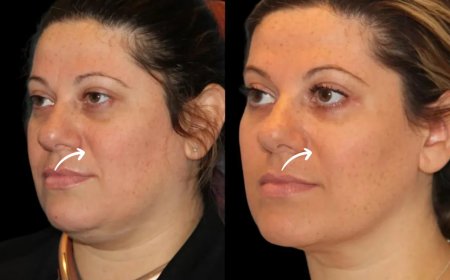Lazy Eye Treatment: Modern Approaches to Correcting Amblyopia
This blog aims to provide an in-depth look at lazy eye treatment, covering everything from traditional methods to the latest technological advances.

Lazy eye, known medically as amblyopia, is a condition where vision in one of the eyes is reduced because the eye and brain are not working together properly. This blog aims to provide an in-depth look at lazy eye treatment, covering everything from traditional methods to the latest technological advances.
Understanding Lazy Eye
Amblyopia is the leading cause of decreased vision among children. It typically develops from birth up to age 7 years and is characterized by the brain favoring one eye over the other. This leads to the weaker eye not receiving adequate stimulation, resulting in poor visual development.
Causes of Lazy Eye
- Strabismus: Misalignment of the eyes, where one eye turns inward, outward, upward, or downward, is the most common cause of amblyopia. The brain suppresses the image from the misaligned eye to avoid double vision, which leads to amblyopia in the suppressed eye.
- Refractive Errors: Significant differences in the prescription (focusing power) between the two eyes, such as farsightedness, nearsightedness, or astigmatism, can lead to amblyopia. This is called refractive amblyopia.
- Deprivation: This type occurs when something blocks light from entering and being focused in a baby's eye, such as a congenital cataract. This severe form of amblyopia requires urgent treatment to prevent permanent vision loss.
- Anisometropia: When there is a large difference in prescription between the two eyes, the brain relies on the eye with the better vision, causing the other eye to become "lazy."
Symptoms of Lazy Eye
Detecting amblyopia can be challenging, especially in young children who may not realize they have a vision problem. Common symptoms include:
- Poor depth perception
- Squinting or closing one eye
- Frequent eye rubbing
- Head tilting
- An eye that wanders inward or outward
- Difficulty with tasks that require seeing details, like reading or schoolwork
Diagnosing Lazy Eye
Early detection is crucial for successful treatment. Pediatricians and eye care professionals recommend regular eye exams for children starting at 6 months of age, then at 3 years, and periodically during school years. A comprehensive eye exam to diagnose amblyopia includes:
- Visual acuity tests to determine the clarity of vision in each eye
- Examination of the eye structure to rule out any physical abnormalities
- Dilated eye exams to check for refractive errors
Treatment Options for Lazy Eye
-
Corrective Eyewear:
- Glasses or Contact Lenses: Correcting refractive errors such as nearsightedness, farsightedness, or astigmatism with prescription glasses or contact lenses can significantly improve vision in the affected eye.
-
Patching:
- Occlusion Therapy: Patching the stronger eye forces the brain to use the weaker eye, thus strengthening its vision. This method requires a patch to be worn over the stronger eye for several hours daily, depending on the severity of amblyopia and the age of the child.
-
Atropine Drops:
- Pharmacologic Penalization: Atropine drops blur the vision in the stronger eye, forcing the brain to use the weaker eye. This method is often preferred for children who may resist wearing a patch.
-
Vision Therapy:
- Orthoptic Exercises: These exercises are designed to improve the coordination and focusing ability of the eyes. Vision therapy, often conducted under the supervision of an optometrist or ophthalmologist, can include activities such as puzzles, computer games, and other exercises that stimulate visual development.
-
Surgery:
- Strabismus Surgery: If amblyopia is caused by strabismus, surgery can correct the eye alignment. This surgery is often followed by other treatments like patching or vision therapy to enhance visual acuity.
Advanced Treatment Methods
With advancements in technology, new methods for treating amblyopia have emerged, offering innovative solutions and better outcomes:
-
Computer-Assisted Vision Therapy: Interactive software programs designed to improve the visual skills of the amblyopic eye are becoming popular. These programs can be used at home with regular guidance from an eye care professional.
-
Virtual Reality Therapy: This cutting-edge approach uses virtual reality headsets to create an engaging and dynamic environment that promotes visual development in the weaker eye. Studies have shown promising results with this immersive method, making therapy more enjoyable for children.
-
Perceptual Learning: This method involves using computer-based activities to improve visual processing in the brain. It focuses on enhancing the brain’s ability to interpret and respond to visual stimuli from the amblyopic eye.
Importance of Early Treatment
Early treatment is critical for successful outcomes. The younger the child, the more adaptable their brain is, making early intervention crucial. Children’s brains have a high degree of plasticity, which means they can adapt and change more easily. However, studies have shown that even older children and adults can benefit from treatment, though the outcomes might not be as significant as in younger children.
Success Stories
There are many success stories of children who have significantly improved their vision through early diagnosis and consistent treatment. For instance, research published in the journal Ophthalmology found that children who started treatment before the age of 7 had the best outcomes. However, older children and teenagers also showed notable improvements, reinforcing the idea that it’s never too late to treat amblyopia.
Challenges and Considerations
Treating amblyopia can present several challenges, including:
-
Compliance: Getting children to consistently wear patches or glasses can be difficult. Creative solutions like decorated patches, reward systems, or choosing attractive frames can help improve compliance.
-
Relapse: Continuous monitoring is necessary as amblyopia can recur. Regular follow-up appointments are essential to ensure lasting results.
-
Emotional Impact: Wearing patches or glasses can affect a child's self-esteem. Support from family, friends, and teachers can help mitigate any negative emotional impacts.
Parental Involvement
Parents play a vital role in the successful treatment of amblyopia. Here are some tips for parents to ensure effective treatment:
-
Consistency: Ensure that your child follows the prescribed treatment regimen consistently, whether it involves wearing patches, glasses, or using eye drops.
-
Positive Reinforcement: Encourage and reward your child for adhering to the treatment plan. Positive reinforcement can motivate them to stick to their regimen.
-
Education: Educate yourself about amblyopia and its treatment options. Understanding the condition can help you make informed decisions and support your child effectively.
-
Support: Provide emotional support and address any concerns your child may have about their treatment. Open communication can help alleviate any anxieties or frustrations they might experience.
Prevention
While not all cases of amblyopia can be prevented, early eye exams and prompt treatment of eye conditions can significantly reduce the risk. Pediatricians recommend that children have their first comprehensive eye exam between 6 months and 1 year of age, with follow-up exams at age 3 and before starting school.
Conclusion
Lazy eye, or amblyopia, is a common vision disorder that can have long-lasting effects if not treated early. Understanding the causes, symptoms, and treatment options is crucial for parents and caregivers. With advancements in treatment methods and a proactive approach, many children can achieve significant improvement in vision and lead normal, healthy lives.
Regular eye exams, early detection, and adherence to treatment plans are key to overcoming amblyopia. If you suspect your child might have a lazy eye, consult an eye care professional promptly to ensure the best possible outcome. With the right approach and support, amblyopia can be effectively managed, allowing children to achieve their full visual potential.
What's Your Reaction?




















